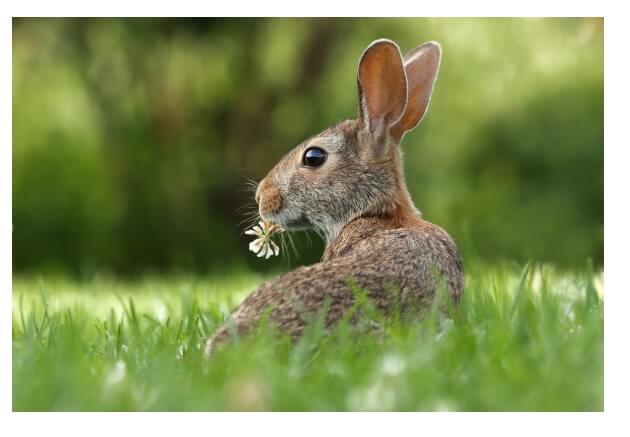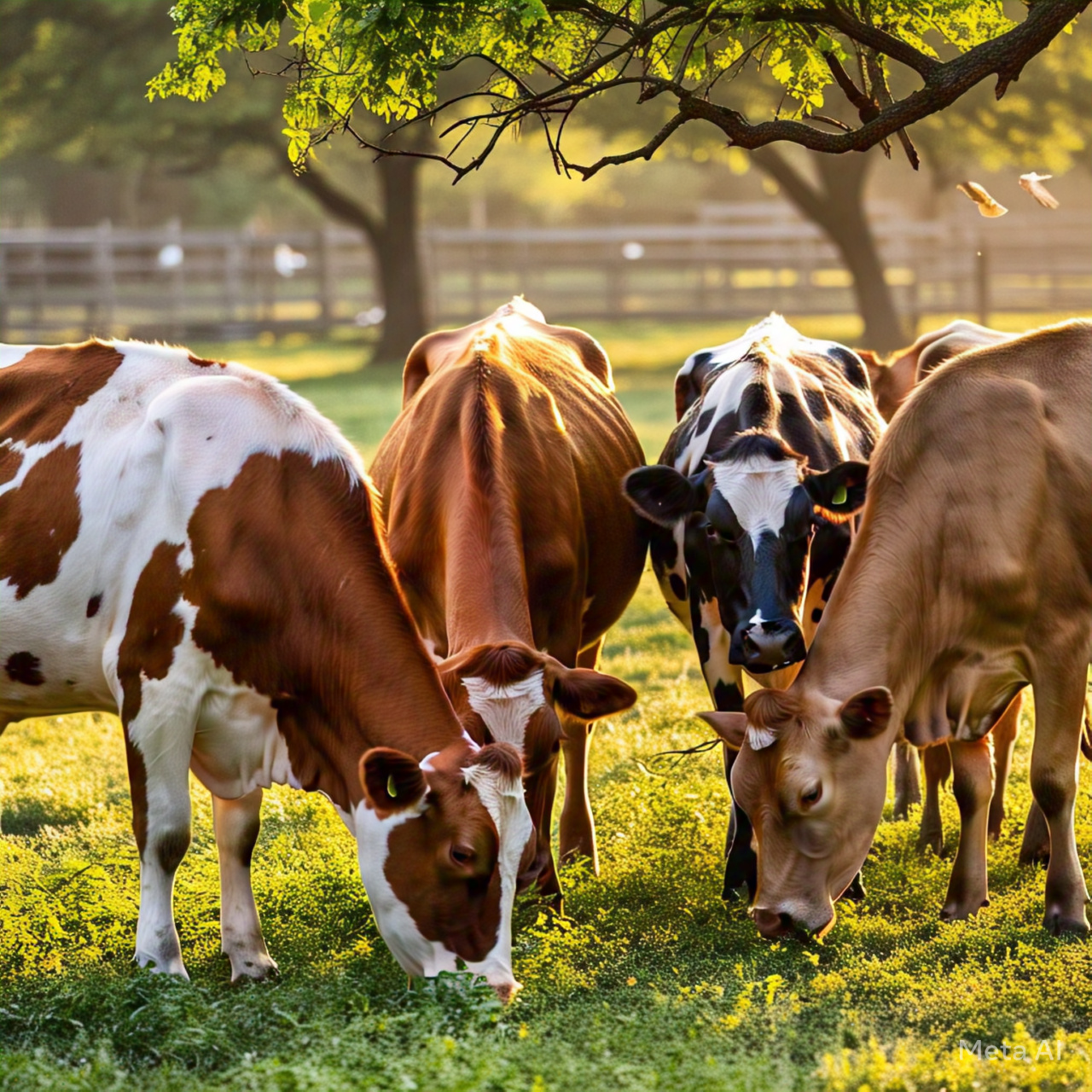Primary 5 Agricultural Science – Third Term Lesson Notes
Week 4: Rearing of Chicken, Rabbit, or Snail
Lesson Information
-
Subject: Agricultural Science
-
Class: Primary 5
-
Term: Third Term
-
Week: 4
-
Topic: Rearing of Chicken, Rabbit, or Snail
-
Sub-topic: Housing, Feeding, and Care for Chickens, Rabbits, and Snails
-
Duration: 40 minutes
-
Age: 9–11 years
Learning Objectives
By the end of the lesson, pupils should be able to:
-
Identify tools and materials used for rearing chickens, rabbits, and snails.
-
Construct a medium-sized cage, hutch, or pen for these animals.
-
Raise chickens, rabbits, or snails at school or at home.
Keywords
-
Poultry
-
Hutch
-
Pen
-
Snailery
-
Feeder
-
Brooder
Set Induction (Funny Classroom Interaction)
Teacher: “Who likes eating chicken?”
Pupils (shouting): “Me! Me! Me!”
Teacher: “Who has eaten rabbit meat before?”
Tunde: “No, but I have seen it in cartoons!”
Teacher: “What about snails? Who loves eating snails?”
Aisha: “Ewww, they are slimy!”
Emeka: “No, ma! They look like slow-moving jelly!”
Teacher: “Well, today, we are going to learn how to rear them. Who’s ready to become a farmer?”
Pupils: “Yes!!!”
Entry Behaviour
Pupils have seen chickens, rabbits, or snails before and may have eaten their meat.
Learning Resources and Materials
-
Charts showing different farm animals
-
Pictures of chicken coops, rabbit hutches, and snail pens
-
Live or toy chickens, rabbits, and snails
-
Simple tools like wood, netting, bowls, and feeders
Building Background Knowledge
-
Ask pupils if they have seen a chicken coop, rabbit hutch, or snailery before.
-
Discuss where people keep these animals at home or in farms.
-
Connect their knowledge to today’s lesson.
Embedded Core Skills
-
Observation
-
Communication
-
Critical thinking
-
Creativity (designing and constructing cages)
Instructional Materials
-
Charts of different farm animals and their housing
-
Toy or real-life chicken, rabbit, and snail
-
Feeder, drinker, and simple cages
Easy Guide to Rearing Chickens, Rabbits, and Snails for Beginners
Starting a small farm or homestead can be incredibly rewarding, especially when it involves rearing animals like chickens, rabbits, and snails. Whether you’re interested in egg production, meat, or sustainable farming practices, these animals are relatively easy to care for and can be a great starting point for beginners. Here’s an easy guide to get you started on each:
1. Rearing Chickens: A Beginner’s Guide
Why Chickens?
Chickens are great for producing eggs, meat, and can even help with pest control. They are hardy animals, but they do need proper care to thrive.
Step 1: Housing
Chicken Coop: Chickens need a safe, dry, and secure space. A chicken coop with good ventilation, perches for roosting, and nesting boxes for egg-laying is essential.
Size of Coop: Ensure there is enough space for your chickens to move around. The general rule is 2-3 square feet per chicken inside the coop.
Fencing: Strong fencing around the coop is necessary to protect chickens from predators.
Step 2: Feeding
Balanced Diet: Provide commercial chicken feed for balanced nutrition. Supplement with kitchen scraps like vegetable peels, grains, and insects to keep them entertained and healthy.
Fresh Water: Always ensure chickens have access to clean, fresh water.
Step 3: Health and Hygiene
Regular Cleaning: Clean the coop regularly to avoid the buildup of waste that can lead to diseases.
Vaccinations: Regular vaccinations help protect chickens from common diseases like Newcastle disease and avian influenza.
Parasite Control: Regularly check for parasites like lice or mites and treat accordingly.
Step 4: Egg Production
Nesting Boxes: Make sure the hens have a private, quiet space to lay eggs.
Collect Eggs Regularly: Collect eggs at least once or twice a day to keep the nesting boxes clean and avoid egg breakage.
When I started rearing chickens, I used a small wooden coop with a simple nesting box inside. The hens were happy and produced eggs every morning. The key was making sure the chickens had a clean space and a good diet.
2. Rearing Rabbits: A Beginner’s Guide
Why Rabbits?
Rabbits are excellent for beginners because they require less space and are relatively easy to manage. They provide meat, fur, and can even be kept as pets for children.
Step 1: Housing
Rabbit Hutch: Provide a secure and comfortable hutch for your rabbits. The hutch should have separate areas for eating, sleeping, and exercising.
Space Requirements: Each rabbit should have enough space to move around freely. A minimum of 3 square feet per rabbit is recommended.
Safety: Rabbits are prey animals, so the hutch must be predator-proof. Make sure to keep them away from predators like dogs or birds of prey.
Step 2: Feeding
Hay and Grass: Rabbits need unlimited access to hay, which helps with digestion and prevents obesity. Fresh grass can also be a good supplement.
Pellets: Supplement hay with rabbit pellets that provide necessary nutrients.
Fresh Vegetables: Include fresh veggies like carrots, lettuce, and spinach, but avoid iceberg lettuce as it’s not very nutritious.
Fresh Water: Rabbits need constant access to clean water.
Step 3: Health and Hygiene
Litter Box: Rabbits are naturally clean and will often use a litter box. Keeping the hutch clean and dry is important to prevent diseases.
Grooming: Regular grooming is necessary, especially for long-haired breeds. This helps prevent matting and hairballs.
Vaccinations: Just like chickens, rabbits should be vaccinated against diseases like Rabbit Hemorrhagic Disease (RHD).
Step 4: Breeding
Mating: When you’re ready to breed rabbits, make sure to select healthy, compatible pairs. Keep the doe and buck together only during mating to prevent unwanted pregnancies.
I started with two rabbits and built a simple hutch using wire and wood. Within a few months, I had a litter of baby rabbits! It’s important to ensure the rabbits have a good, safe space to run around. Their playful nature made them easy to bond with.
3. Rearing Snails: A Beginner’s Guide
Why Snails?
Snail farming is a relatively low-maintenance and profitable venture, particularly if you’re interested in sustainable farming. Snails can be raised for meat, which is high in protein, or for their shells.
Step 1: Housing
Snail Pen: Snails need a cool, shaded area with high humidity. Build a pen using wood or stone, and cover it with mesh to prevent predators from getting in.
Soil: The soil should be moist but not waterlogged. Snails thrive in loose, well-draining soil.
Shade: Ensure the pen is shaded from direct sunlight, which can dehydrate snails quickly.
Step 2: Feeding
Vegetables and Fruits: Snails enjoy leafy greens, cucumber, carrots, and overripe fruits. Provide fresh food regularly and remove uneaten food to avoid spoilage.
Calcium: Snails need calcium for strong shells. You can provide crushed eggshells, limestone, or snail feed that contains calcium.
Step 3: Health and Hygiene
Moisture: Snails require high humidity to stay healthy. Ensure the pen is kept moist but not wet.
Clean Pen: Regularly clean the snail pen to avoid mold growth and to keep the snails free from parasites.
Pest Control: Snails can be vulnerable to pests like ants, which can harm them. Keep the area around the pen free from these pests.
Step 4: Harvesting
When to Harvest: Snails typically mature in about 6-9 months. When they are fully grown, they can be harvested for meat or shells.
Handling: Handle snails carefully and avoid dropping them, as they are fragile.
Snail farming is quieter compared to chickens or rabbits, but it’s no less rewarding. I started by creating a small shaded pen and feeding them vegetable scraps from the kitchen. Seeing them grow over time and learning how to care for them was a fulfilling experience. The key is ensuring they have enough moisture and food.
Rearing chickens, rabbits, and snails are excellent options for beginners who want to start small but are ready to learn and grow in the world of animal husbandry. Each animal requires its own specific care, from the right shelter to proper nutrition and health care. With patience and proper management, you’ll not only learn valuable skills but also enjoy the rewards of raising your own farm animals.
My own journey with these animals has been full of trial and error, but each lesson has been worth it. Whether it’s collecting eggs, watching rabbits hop around, or harvesting snails, the satisfaction of seeing your efforts pay off makes it all worthwhile.
Lesson Content
1. Tools and Materials for Rearing Chickens, Rabbits, and Snails
To rear any animal, you need the right materials. Here are some examples:
Chicken (Poultry) Farming
✅ Housing: Wooden or metal coop, wire mesh, perches
✅ Feeding tools: Feeder, drinker
✅ Other tools: Incubator (for hatching eggs), nesting box
Rabbit Farming
✅ Housing: Wooden or metal hutch with a wire mesh front
✅ Feeding tools: Small feeding trough, water container
✅ Other tools: Brushes for cleaning, wooden nesting box
Snail Farming
✅ Housing: Snailery made of old tires, wooden boxes, or a well-ventilated cage
✅ Feeding tools: Shallow feeding plates
✅ Other tools: Moist soil, shade cover
2. Constructing a Medium-Sized Cage, Hutch, or Snailery
Step 1: Choose a material (wood, metal, or wire mesh).
Step 2: Measure and cut the materials to size.
Step 3: Assemble the parts to form a coop, hutch, or snailery.
Step 4: Place straw, dry leaves, or soft bedding for comfort.
Step 5: Make sure there is good ventilation and protection from rain.
3. Raising Chickens, Rabbits, and Snails
A. How to Raise Chickens
1️⃣ Provide clean water and nutritious food daily.
2️⃣ Keep them in a safe and dry coop.
3️⃣ Give them vaccinations to prevent diseases.
Funny Pupil Reaction:
Fatima: “Do chickens take medicine like us?”
Teacher: “Yes! But they don’t swallow tablets like humans. They take vaccines in their water.”
Pupils: “Woooow!”
B. How to Raise Rabbits
1️⃣ Feed them with grass, vegetables, and pellets.
2️⃣ Keep them in a clean hutch with space to move.
3️⃣ Protect them from predators like dogs and snakes.
Funny Pupil Reaction:
Tunde: “Ma, if I give my rabbit rice, will it eat it?”
Teacher: “No! Rabbits don’t eat cooked food. They love fresh grass and carrots.”
Tunde: “Aww, no jollof rice for rabbits?”
C. How to Raise Snails
1️⃣ Keep them in a moist environment with enough shade.
2️⃣ Feed them with fruits, leaves, and calcium sources.
3️⃣ Check regularly for sick snails and remove them.
Funny Pupil Reaction:
Aisha: “Ma, can I race my snails with my friends?”
Teacher: “Yes, but don’t expect them to be as fast as a car!”
Class Activity (FAQ for Discussion)
-
What tools do farmers use to raise chickens?
-
Why do rabbits need a special hutch?
-
What do snails eat?
-
How do farmers protect animals from getting sick?
-
What happens if a chicken does not get food and water?
-
Why do we rear farm animals?
-
How can we build a simple animal house at home?
-
What is the difference between a hutch and a coop?
-
How do snails help the environment?
-
Can chickens and rabbits stay in the same house?
Possible Student Responses:
✅ Musa: “Farmers use feeders, drinkers, and cages for chickens.”
✅ Zainab: “Rabbits need a hutch so they don’t run away.”
✅ Chisom: “Snails eat fruits, vegetables, and soft leaves.”
✅ David: “Farmers keep animal houses clean to stop diseases.”
Assessment & Evaluation
Fill in the blanks:
-
A place where chickens are kept is called a ___.
-
Rabbits should be kept in a ___.
-
Snails need a ___ environment to survive.
-
Farmers use a ___ to feed chickens.
-
We raise farm animals for ___ and ___.
-
___ and ___ are examples of animals that can be reared at home.
-
Chickens eat ___ and ___.
-
The house for snails is called a ___.
-
Rabbits should be protected from ___ and ___.
-
A chicken house should have enough ___ and ___.
Conclusion
-
Chickens, rabbits, and snails need good housing, food, and care to grow well.
-
Farmers use different tools to make animal rearing easy.
-
We can rear these animals at school or at home for food and money.
Teacher’s Closing Words:
“Now, who wants to start a mini farm at home?”
Pupils: “Me! Me! Me!”
Let’s quickly discuss the possible solutions to the evaluation questions above and you tell me what you think the answer would be.
Please don’t be shy and fell free as I call your names
1. What tools do farmers use to raise chickens?
Teacher: “What do you think farmers use to take care of their chickens?”
Musa: “They use spoons to feed them, ma!”
Teacher (laughing): “Musa, chickens don’t eat like humans. Farmers use feeders and drinkers, which look like small bowls made for birds.”
Zainab: “I saw my uncle using a basket to carry his chickens. Does that count as a tool?”
Teacher: “Good thinking! While baskets are used to carry chickens, they are not a feeding tool. Feeders, drinkers, and brooders are the real tools farmers use.”
2. Why do rabbits need a special hutch?
Teacher: “Why can’t rabbits live in the same house as chickens?”
Tunde: “Because they will get jealous of each other’s food!”
Teacher (smiling): “Not really, Tunde. Rabbits need a separate hutch because they like to stay dry, warm, and safe from predators like cats and dogs.”
Chisom: “Ohhh! Like a bedroom for rabbits?”
Teacher: “Exactly! It’s their little home, just like you have your own room.”
3. What do snails eat?
Teacher: “Who knows what snails eat?”
Aisha: “I think they eat sugar because they are slimy!”
Teacher (laughing): “No, Aisha, snails don’t eat sugar. They love fresh leaves, fruits, and soft vegetables.”
Emeka: “So, if I give my snail jollof rice, it will eat?”
Teacher: “No, snails don’t eat cooked food. But they do like things like pawpaw leaves and cucumber.”
4. How do farmers protect animals from getting sick?
Teacher: “What do we do when we don’t want to get sick?”
Pupils: “We wash our hands, eat well, and take medicine!”
Teacher: “Great! Farmers do something similar. They give animals clean food, water, and vaccinations.”
Fatima: “Do chickens take paracetamol?”
Teacher: “Not exactly. They take vaccines and special medicine made just for them.”
5. What happens if a chicken does not get food and water?
Teacher: “What happens if you don’t eat for two days?”
Daniel: “I will cry and beg my mum for food!”
Teacher: “Exactly! Chickens also get weak, sick, or even die if they don’t eat and drink water.”
Zainab: “So, farmers should never forget to feed their animals?”
Teacher: “Absolutely! A good farmer always makes sure his animals are well-fed.”
6. Why do we rear farm animals?
Teacher: “Why do people keep animals on farms?”
Tolu: “So they can have pets, like a chicken as a best friend!”
Teacher (laughing): “Not really, Tolu. We keep farm animals for their eggs, meat, and sometimes for work.”
Musa: “Oh! So, when my dad buys chicken for Christmas, it’s from a farm?”
Teacher: “Yes, most of the meat we eat comes from farms.”
7. How can we build a simple animal house at home?
Teacher: “What do we need to build a home for a rabbit or chicken?”
Tunde: “Bricks and cement like our house!”
Teacher: “No, animal houses are made of wood, wire mesh, or even strong cartons.”
Fatima: “Oh, so it’s like a little house just for them?”
Teacher: “Exactly! It must be safe, clean, and comfortable for the animal.”
8. What is the difference between a hutch and a coop?
Teacher: “What’s the name of a house for chickens?”
Musa: “Coop!”
Teacher: “And for rabbits?”
Aisha: “Um… rabbit house?”
Teacher: “Not quite. A rabbit’s home is called a hutch.”
Chisom: “So, a coop is for chickens and a hutch is for rabbits?”
Teacher: “Yes! You got it!”
9. How do snails help the environment?
Teacher: “Why are snails important?”
Emeka: “Because they are slow and funny to watch!”
Teacher: “Well, that’s one thing, but snails also help the soil by breaking down dead leaves.”
Fatima: “Oh! So, they clean the environment?”
Teacher: “Yes! Snails are like little natural recyclers.”
10. Can chickens and rabbits stay in the same house?
Teacher: “Can we put chickens and rabbits in the same house?”
Daniel: “Yes, they will be best friends!”
Teacher: “Not really. Chickens love to scratch the ground and make a mess, but rabbits like to stay clean.”
Zainab: “So, they need different homes?”
Teacher: “Yes! Keeping them separate keeps them healthy and comfortable.”
Make sure you read your books.
See you during the next lesson












